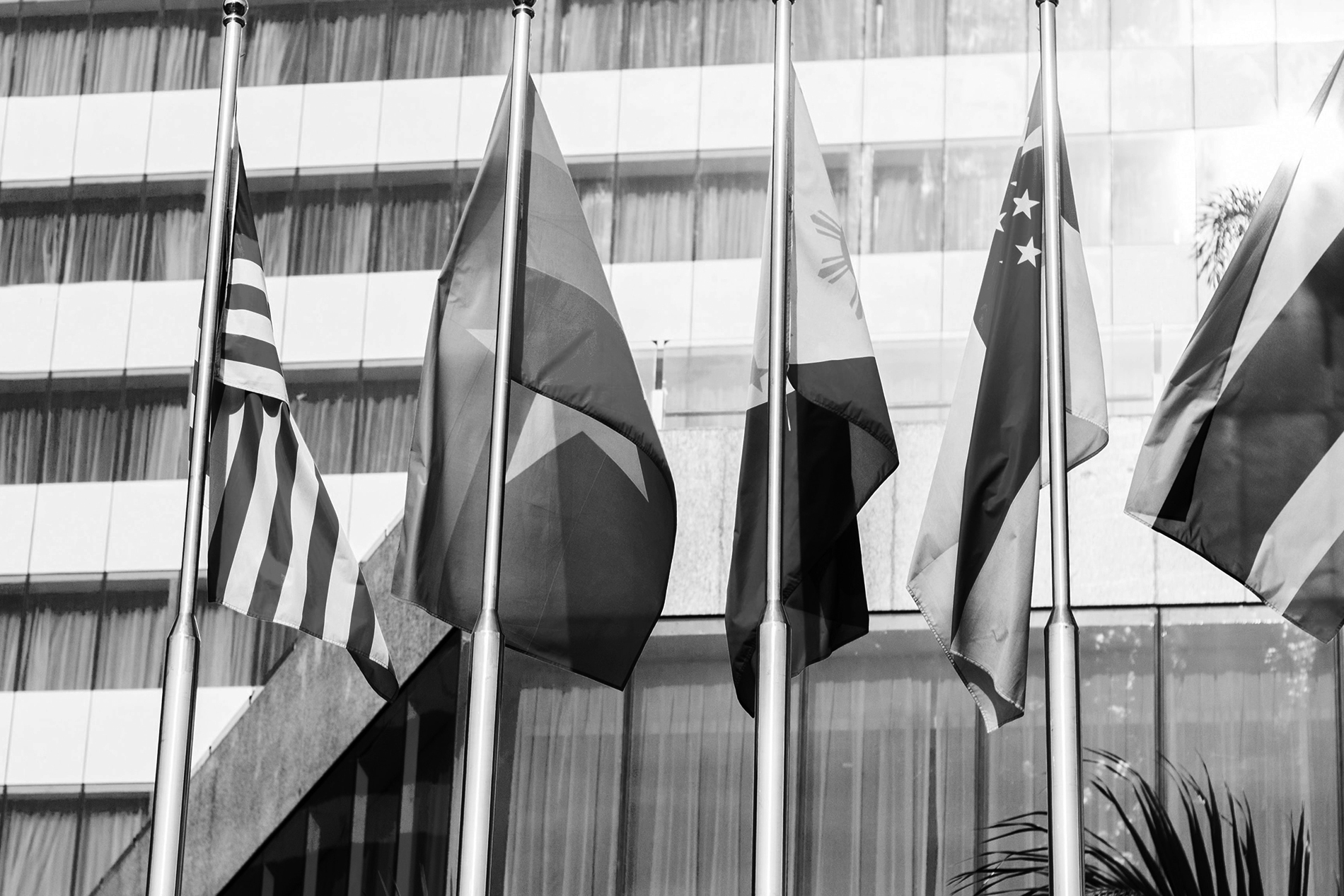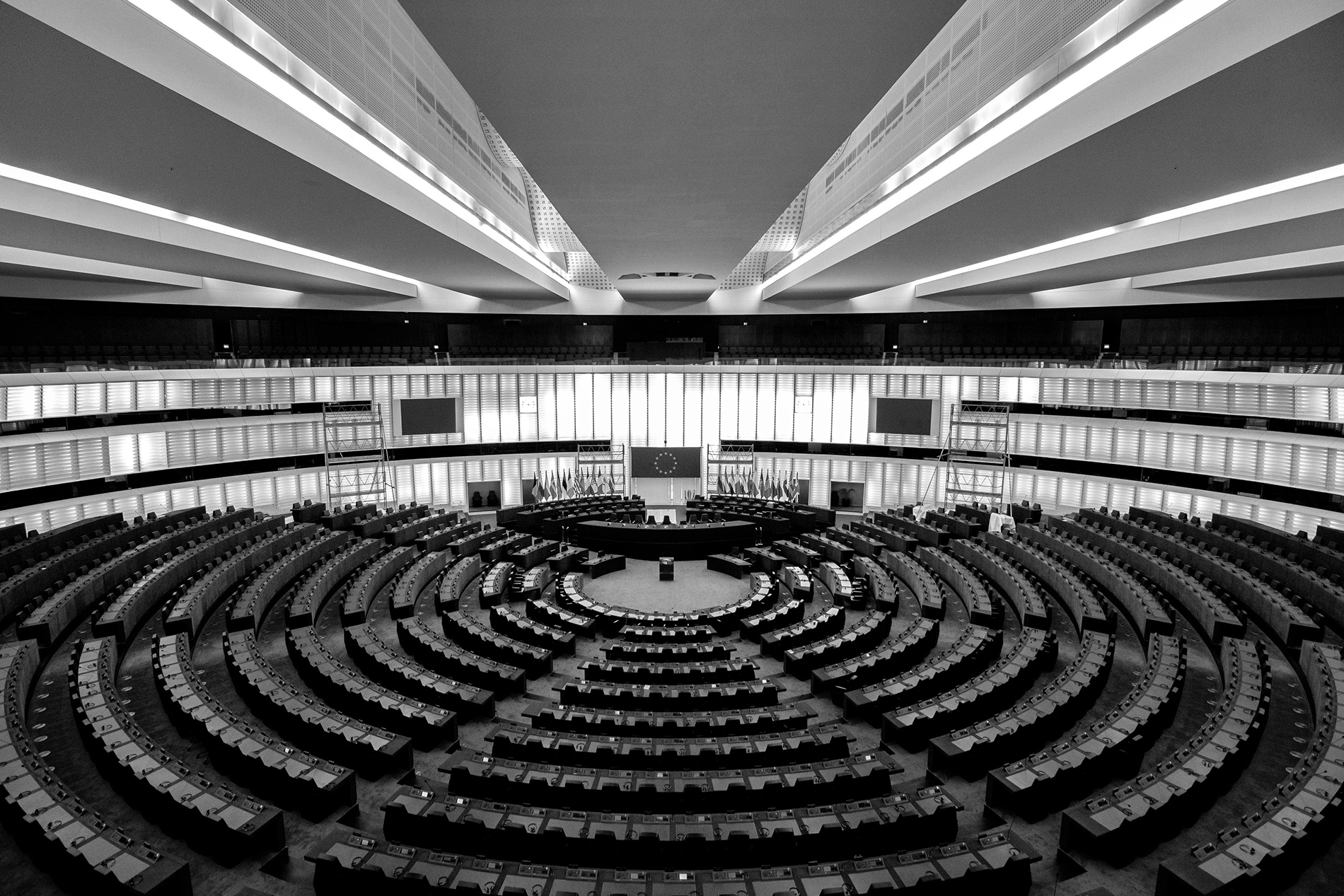Although infectious diseases has devastated human societies throughout history, it is widely recognized that the increasing economic, political, and cultural integration driven by contemporary processes of globalization has magnified the risk and impact of pandemics for all countries, including Canada. The prevalence and ease of air travel, patterns of trade, finance, and food production that require the movement of large numbers of people and goods on a daily basis, the surge in economic and political refugees, and dizzying advances in telecommunications, have all combined to create a world that is “pathogenically” interconnected in unprecedented ways.[1]
The current COVID-19 crisis has reminded us of the negative impact of that interdependence, most notably for the poor and conflict-affected who look set to be hit particularly hard. But it has also highlighted the inadequate global mechanisms we have for coordinating an effective and equitable response.
So how should we think about the possibilities for international cooperation in this context? First, I want to briefly recount some of the missed opportunities to strengthen our capacity to respond to contemporary infectious disease. Second, I want to consider — more conceptually — how we might analyze how states have attempted over the past two months to respond to the COVID-19 threat. Third, I’ll briefly review some of the mechanisms we have for collaborating internationally, focusing mainly on the WHO. And finally, I’ll hint at how the pandemic is affecting broader geopolitical dynamics.
Missed Opportunities

Well before the outbreak of the COVID-19 pandemic, national and international policymakers were consistently emphasizing the catastrophic risks associated with pathogens and infectious diseases with the capacity to kill significant numbers of people, overwhelm public infrastructure, and decimate both state and global economies. It has been commonplace in discussions of international security to distinguish between traditional and non-traditional threats to states and societies. The former emanate from a particular state (or group of states) and take the form of either military or economic aggression. Think, for example, of Iraq’s invasion of Kuwait in 1990, or Russia’s intervention in Ukraine in 2014. Non-traditional threats, by contrast, do not emanate from the conscious policy of a hostile state, and are not directed at one particular target. Climate change and infectious disease are perhaps the best examples. These “transnational” threats do not recognize borders, and have widespread, but uneven effects. Furthermore, they cannot be addressed by the actions of a single state acting alone. Strong and capable states are part of the solution, but they are insufficient. Finally, it has been recognized for some time that these transnational threats can have knock-on effects that make other dangers more likely – such as the breakdown of social order or even civil war.
When Canada’s last foreign policy review was conducted in 2005, in the wake of the 9/11 attacks, surveys indicated that Canadians viewed infectious disease, rather than terrorism, as the primary threat to their security — largely as a result of the SARS outbreak. Over the last decade, further incidences of infectious disease outbreaks intensified concerns in a number of states about the profound political, economic and security implications of uncontrolled pandemics. In the midst of the Ebola crisis in 2014, the United Nations Security Council took the dramatic step of declaring the epidemic a “threat to international peace and security,” and created the UN Mission for Ebola Emergency Response — the first time a UN health mission had ever been undertaken.[2] The following month, the Obama administration deployed approximately 4,000 US engineers and military personnel to address the impact and spread of the disease. At a subsequent G7 meeting in 2015, German Chancellor Angela Merkel and UK Prime Minister David Cameron joined President Obama in underlining that the Ebola epidemic had been a “wake-up” call for the global community and its institutions, which had proven slow and poorly prepared to fight the outbreak.
But if we gaze back even earlier, to the slow and ill-resourced response to the outbreak of the HIV-Aids epidemic, we find calls for the international community to better address — both preventively and responsively — the challenges posed by infectious disease. A landmark 2004 report commissioned by UN Secretary General Kofi Annan to inform the global summit marking the 60th anniversary of the United Nations, emphasized the deterioration of our global health system, its vulnerability to new and more deadly pandemics, and both the promise and peril of developments in biotechnology. The report called for a concerted effort to rebuild global health infrastructure, starting with a stronger public health capacity at the local and national levels throughout the developing world.[3] The underlying message here, of course, was that developed countries seemed to only tune in to global health challenges when they directly affected them as security threats. What we needed, according to the experts advising Annan, was a global health initiative that would not only yield direct benefits for the prevention and treatment of disease throughout the developing world, but would also provide the basis for an effective global defence against natural outbreaks of deadly infectious disease and potential incidents of bioterrorism. But such calls went largely unheeded.
It’s also worth raising three cautionary notes about a wholesale adoption of a security paradigm to frame the response to global pandemics. The move to ‘securitize’ health has generated an active debate in the academic community, and warnings about possible contradictory effects. One common line of critique — in relation to well-known cases such as the Spanish influenza epidemic in 1918–1919 and the HIV/AIDS crisis in Africa in the 1980s and 90s — questions the empirical data that suggest a linkage between infectious diseases and conflict. The worry here, as hinted at above, is that the securitization of health is manipulated to further the political interests of powerful developed countries. The second main criticism concerns both the political and human costs of securitizing health. It’s not difficult to imagine financial resources being deployed in favour of a narrow range of interventions and actors, and a relative lack of attention to serious public health problems that generate high mortality but aren’t necessarily captured by the global health security lens. Finally, there are legitimate concerns about the institutional effects of securitization. We’ve seen in previous pandemics, and are seeing today, how securitization transfers authority and resources from civilian to security agencies; the latter are quick to conceive and approach diseases through the logic of threat containment and elimination. But this short-term mentality, while necessary in part, rarely addresses the underlying causes that undermine national and local health infrastructures and create the breeding grounds for further pandemics. Moreover, as illustrated through aspects of the response to Ebola, there are serious risks of breaches of human rights when security agencies lead the response to pandemics, as affected individuals and communities are quickly stigmatized as threats.[4]
How has Global Policy Developed During the COVID-19 Crisis?

There are two broad models, or analytical lenses, for thinking about the development of global policy. One is what some have called a ‘polycentric’ lens, whereby multiple actors participate as ‘governors’ in global policy-making, including national governments, private sector actors, international organizations, and non-governmental organizations. The other is the more traditional ‘state-centric’ lens, whereby policy develops from the interaction among politically and territorially demarcated sovereign states.[5]
While there is clearly a host of actors that could, theoretically, shape policymaking on COVID-19, and which have played a role in the broader governance of global health over the past decades, at our current moment we find ourselves operating in a largely state-centric world. Indeed, this crisis has re-asserted the importance and force of sovereignty as well as of national identity and citizenship. Populations have become more acutely conscious of their membership in a particular national community, and of their reliance upon their governments to protect them from the spread of this virus. National governments have engaged in emblematic acts of sovereign control, including the closure of borders and restrictions on air travel both out of and into their countries. At the same time, governments are facing demands to protect their citizens beyond their borders – by dispatching planes to bring citizens home. It has also become painfully clear — if it was not already before — that those who are displaced, or ‘stateless’, find themselves in particularly vulnerable situations. So too do populations in societies where the state’s capacity to protect is highly underdeveloped or where the political legitimacy of state authorities is contested.
Nonetheless, no state can completely isolate or withdraw itself from the international system. More importantly, this pandemic is a classic illustration of a global collective action problem, whereby the need to act together, as UN Secretary-General Antonio Guterres recently proclaimed, is not only a “moral imperative” but also “in everyone’s interest”. There have been various forms of state interaction during the COVID-19 outbreak, ranging along a spectrum according to density and formality.
Global Policy Competition
We can begin at the furthest end of the spectrum, with global policy competition — in which there is only a very minimal level of interaction among decision makers in different countries to produce an effect on policy, and conscious efforts to privilege the well-being of one’s own population and economy. We’ve seen at least two kinds of competition in the COVID-19 crisis. The first, and most obvious, is the competition by countries to access personal protective and testing equipment, and relatedly, the move by some to place export bans on these materials. Despite the rhetoric on display at recent meetings at the head of state level (more on this below), states are not actively collaborating to create and equitably share a global supply of the vital ingredients needed to fight the virus. Instead, it’s every nation for itself. The second example of competition is the widely reported effort by the Trump administration to gain first-mover advantage by acquiring exclusive access to a vaccine being developed for the virus. Again, not withstanding the calls by global officials such as the UN Secretary-General and the Director General of the WHO to collaborate in the sharing of epidemiological and clinical data, and materials necessary for R&D, intergovernmental cooperation remains limited and ad hoc.
But there has also been another, subtler form of competition among states, which could be described as productive or even ‘virtuous’ in its effects. For a broad set of countries — though not all — there has been an evolutionary, or almost Darwinian process, whereby unsuccessful strategies to combat COVID-19 have been ‘selected out’, in favour of more stringent forms of social distancing.
Global Policy Communication
This suggests a second form of state interaction in this crisis, what we might call global policy communication, whereby the policies of one state produce not so much negative externalities for others, but rather crucial sources of information for others in their own response to the pandemic. In short, policymakers are enmeshed in a process of ‘policy transfer’, whereby information about experiences in other countries is drawn upon to design or revamp policies within their own societies. And here, as we might expect, the modes of communication and information transmission differ in terms of their intensity, regularity, and degree of formalization. National officials can learn about others’ approaches simply through publicly available sources, without much interaction with policymakers from the countries where those experiences originated. This appears to be the case with respect to Canada’s own monitoring of the development of and response to the virus in South Korea — a country currently held up as a positive model of pandemic management. But there are also more institutionalized forms of policy communication – for example, through the work of ‘transnational epistemic communities’ (networks of scientific professionals with deep expertise in pandemic prevention and response), who provide information to policymakers or who are directly involved in designing particular policy solutions.
While there have been some conscious attempts over the past two months to share best practices, to date what we have seen is largely a process of emulation rather than concerted cooperation among states. Policymakers in countries at an earlier point along the curve are watching developments in countries at the height of the virus, or those starting to descend to the other side, and putting in place similar mechanisms that have been deemed effective — tailored, of course, to national circumstances. The interesting question is whether this global policy communication among states is creating productive processes of learning or developing new shared goals and mechanisms that are likely to outlive this crisis, and help us with the next one.
Global Policy Cooperation
A third form of state interaction, global policy cooperation, entails more conscious and sustained coordination, and the creation of reciprocal commitments to harmonize policies across countries. Global policy cooperation can take place either in groupings or ‘clubs’ of states, or through more formal international institutions. I’ll look briefly at examples of both.
Clearly the COVID-19 crisis calls for coordination, at the very least, to facilitate an adequate supply of healthcare and testing equipment; to share test treatment results and the development of vaccines; and to amplify and synchronize fiscal action to address the economic effects of the pandemic. On March 25th, the leaders of G7 countries met by videoconference to discuss the evolution of the COVID-19 pandemic and its impact. Yet, rather than providing an impetus for global policy cooperation, the meeting served as a forum for showcasing some of the deep divisions within the international community. Not only was there no final communiqué from the gathering, but leaders reportedly couldn’t even agree on what to call the epidemic — with Trump administration officials continuing to refer to it as the “Wuhan virus”.
The following week, the G20 met virtually to address both the health and economic impacts of COVID-19. Given that G20 countries represent 80% of global economic output, and two thirds of the world’s population, this body stands as a key piece of the global architecture available to address pressing collective action challenges. In fact, the G20 was a lead actor in directing the response to the 2008 financial crisis. G20 leaders did issue a final statement on March 30, pledging their commitment to coordinate public health and financial measures and to support the work of the World Health Organization.[6] More specifically, the statement referred to increased sharing of information and materials for R&D, financial resources for the new WHO Solidarity Response Fund, and efforts to address blockages and shortages of vital medical supplies — including new incentives to increase their production. G20 leaders also promised to inject, collectively, $5 trillion into the global economy to cushion the impact of COVID-19, and gestured to a future meeting of Finance and Health Ministers that would launch a “global initiative on pandemic preparation and response.”
These are encouraging words, but to date, national action — including the mobilization of financial resources — has dwarfed efforts in international cooperation. Furthermore, despite the pledge to facilitate trade, G20 countries still haven’t explicitly called for an end to export bans that many states — including France and Germany — have placed on drugs and medical supplies. Countries around the world (including, in particular, the United Kingdom) continue to rely on China for drug ingredients, and are now struggling to avoid shortages after lockdown measures in that country held up supplies and delayed shipments. Elsewhere, supply chains are backing up, as airfreight capacity plummets and companies face not only shortages of truck drivers, freight containers, and shipping crews, but also quarantines at ports. As we move into another more deadly week for the spread of the virus, the level of intergovernmental collaboration appears woefully inadequate to meet the scale of this once-in-a-generation crisis.
Institutionalized Forms of Cooperation: The WHO

So what about more formal mechanisms for coordinating efforts related to public health and pandemics? When it was created in 1948, the WHO marked a new and more cooperative approach to tackling infectious disease, to replace some of the more ad hoc measures adopted in the early 20th century. Articles 21 and 22 of the WHO’s constitution empower the World Health Assembly (WHA) to adopt legally binding regulations in a number of areas, including on sanitary and quarantine requirements and other procedures designed to prevent the international spread of disease. In addition, the control of infectious diseases has been linked to a broader effort to build health capacity in poorer countries, which have historically been exporters of infectious diseases.
WHO’s role, however, is primarily a directive rather than operational one — even after waves of reform that responded to episodes of infectious disease over the past five decades. According to its Article 2 mandate, the WHO is the ‘directing and coordinating authority on international health work,’ and fulfills this role through normative guidelines, policy frameworks, and technical assistance. Most recently, it has framed the challenge of combatting infectious diseases within the rubric of the UN’s Sustainable Development Goals (SDGs) – particularly Goal 3, which aims at realizing universal and affordable health care across all countries. In other words, the prevention of, and response to, disease has been conceived as depending upon stronger public health systems, and improvements in the institutional, social, and political determinants of health. That said, the WHO has coordinated and catalyzed campaigns to eradicate and control a number of infectious diseases, with some successes, such as smallpox in the 1970s, and some notable failures — namely HIV/Aids in the 1980s and 90s and the more recent Ebola crisis in West Africa.
One of WHO’s main policy instruments are the International Health Regulations (IHR), which were last revised in 2005 and serve as both an early warning tool and a mechanism for coordinating responses to pandemics. Under Articles 5 and 6 of the IHR, states must assess all unusual health events occurring on their territory and notify WHO of any that may constitute a ‘public health emergency of international concern’ (PHEIC). WHO’s director-general also has the authority to declare a PHEIC — which the director has done 5 times since 2005 — and to issue temporary recommendations for its management and control. States have a number of obligations to engage in surveillance, verification, cooperation, and information sharing, and also crucially to strengthen and maintain their own domestic capacities to detect, assess and respond to events (defined as ‘core capacities’). Interestingly, the regulations also contain detailed provisions for the respect of human rights, the avoidance of unnecessarily intrusive measures, and the protection of personal data.
While this sounds good in theory, and points to some centralization of decision-making powers in the WHO, these regulations suffer from the same weaknesses as many other international agreements. The obligations in the IHR are counterbalanced by the right of states, under the agreement, to either apply national health measures going beyond WHO’s recommendations, or to breach some of their obligations when justified as necessary. This caveat, which was the outcome of difficult negotiations, reflects a stubborn reality of contemporary global politics and policy-making: states’ reluctance to transfer substantial authority to an international body in sensitive issues of sovereign control.
WHO has also been heavily criticized for its approaches to surveillance and response. During the H1N1 pandemic, for example, it was accused of having overestimated the severity of the disease, thereby raising confusion and fear, and for a lack of transparency and conflicts of interest benefiting the pharmaceutical industry. On the other hand, during the Ebola virus outbreak, it was condemned for its delay in declaring a pandemic and for its initial failure in leading and coordinating the international response.
Subsequent reviews of the Ebola crisis identified a series of weaknesses in the global response to pandemics, and specifically in the WHO and its regulations. WHO responded to the widespread criticism with an historical shift, from playing an exclusively normative and supportive role, to building an operational capacity for health emergency response. It did so by creating a dedicated and largely independent WHO Health Emergency Programme that cuts across the regional structure of the organization (which had been seen as a barrier to a more centralized approach), and a $100 million Contingency Fund for Emergencies (which helped to address limitations to the organization’s traditional funding structure). To date, however, the CFE has only about a third of that amount, and member states are still refusing to fund the new program through assessed contributions.
Despite these reforms, some key weaknesses in the WHO-led system remain, and can be seen today as hampering the chances for a coordinated response to COVID-19:
- First, very few countries have the ‘core capacities’ required under the IHR and there is insufficient political and financial commitment to implement the IHR’s core provisions in ways that would ensure better prevention and response in relation to pandemics.
- Second, the WHO still has a modest operational capacity and neither its resources nor its organizational culture can initiate rapid response.
- Third, the IHR lack a compliance monitoring mechanism that would build confidence and increase accountability. The WHO Secretariat’s monitoring of nation-states’ core capacities was initially based on the system of national self-assessment and reporting. But we have seen — by considering cases such as China, Iran, and Russia — how this system can easily present a distorted global picture.
- Fourth, the IHR surveillance and response systems within WHO are not only severely under-resourced, but also vulnerable to political pressures. Ultimately, the goal of achieving an evidence-based approach to understanding pandemic risks around the world runs up against a fear of external intrusion and stigmatization. As COVID-19 illustrates, it is a herculean task to encourage full transparency and cooperation from affected countries.
Finally, we need to recognize that global health cooperation goes beyond the immediate tools to detect and respond to outbreaks of infectious diseases. There is also the challenge of sharing biological samples and genetic sequences of pathogens, and strengthening and accelerating the research and development of vaccines. With respect to pathogen-sharing, there is still no dedicated international legal instrument and most of the activities have been largely informal. The most institutionalized form of ‘multilateral virus sharing’ is the voluntary network of laboratories focusing on influenza viruses in cooperation with the WHO, known as the Global Influenza Surveillance and Response System (GISRS). Its work informs the annual recommendations on seasonal flu vaccines, but it has also expanded its surveillance activities to address the growing threat of pandemics.
However, it’s worth noting that this model of international cooperation was seriously questioned by Indonesia’s refusal in 2007 to share its human samples of H5N1 influenza with GISRS. Indonesia challenged the unfairness of the system, in which it alleged that developing countries were freely sharing their viral specimens, while at the same time were not receiving any benefit in return and confronted prohibitive market prices for purchasing vaccines. Indonesia legally justified its response by appealing to the UN Convention on Biological Diversity, and by claiming sovereignty over H5N1 viruses identified in its territory. Once again, a legal and political system of sovereign states was hampering efforts to effectively collaborate in the interests of a global solution to a health challenge.
Indonesia’s stance, which was supported by other developing countries, led in 2011 to the adoption of the non-legally binding Pandemic Influenza Preparedness Framework (PIP framework) by the World Health Assembly. The goal of the PIP is to regulate the entire cycle of pandemic influenza surveillance and response, and to ensure global equity both in access to knowledge about viruses through the sharing of biological materials, as well as in the benefits arising from the production of diagnostics, antiviral medicines, and vaccines. It still remains to be seen how this framework will fare under the pressures emerging from COVID-19.
The International Effects of COVID-19

Aside from the effects of COVID-19 on global health, I want to conclude by considering some of its wider international implications.
As detailed recently by the International Crisis Group (ICG)[7], the coronavirus pandemic is likely to wreak havoc in fragile states, to trigger widespread unrest, and to severely test international crisis management systems. Its effects will be particularly devastating for those caught in the midst of conflict, through disruption to humanitarian aid flows, limitations placed on existing UN peace operations, and the postponement or breakdown of ongoing efforts at diplomacy and conflict resolution. At the moment, Syria, Yemen, and Afghanistan are the most obvious cases in point. Internally displaced persons (IDPs), asylum seekers and refugees are also particularly vulnerable to COVID-19, given their inadequate living conditions and limited access to health care. “Whatever narrow avenues might have existed for displaced persons to move or be resettled to safer and more secure locations”, writes ICG, are now, for all intents and purposes, “shut off due to COVID-19”.
In addition, the spread of the coronavirus has deepened geopolitical friction and accelerated the relative decline of the United States as a world power. This power shift — already well under way prior to the pandemic — is profoundly destabilizing, particularly given the way in which Washington has chosen to respond to its changing position in the international system. In this particular crisis, the United States has not only failed to bring countries together to find a solution, as it did, for example, during the financial crisis in 2008, but has also mismanaged its own response and laid bare the deep structural inadequacies of its health system. More problematically, it has added fuel to the fire of simmering disputes, through its active criticism of other states’ policies. This extends beyond China — which it continues to blame for the outbreak — to include some of the oldest allies of the United States. By contrast, after some crucial errors early on in the epidemic which includes attempts to withhold information, China now views the pandemic as a conduit for gaining influence over other states through humanitarian medical assistance and capacity-building, particularly in Africa. In mid-March, for example, Beijing announced plans to build an African Research Centre for Disease Prevention and Control in Nairobi. China clearly believes that its performance in this crisis will add to the case it makes for the strength of its economic and political system, and the broader narrative that it is on the ‘right side of history’. Given the way that countries such as Hungary are responding to COVID-19 (through efforts to further undermine checks and balances on executive power), it is clear that this crisis is being instrumentalized as a means of testing the competing claims of liberal and illiberal states to better manage extreme social distress and provide security and prosperity for their citizens.
More broadly, as the International Crisis Group predicts, the coronavirus, and how it is addressed, will have a significant impact on the shape of the multilateral order that will emerge in its aftermath. One possible lesson states could draw is that countries ought to come together — not just to better defeat COVID-19, but a host of other catastrophic risks as well. But the signs are not encouraging. The other lesson — that countries need to stand apart in order to better protect themselves — is gaining much traction, and speaks to the favoured narratives of populist politicians around the world who stoke xenophobia and demean efforts at international cooperation as part of a false promise of ‘globalism’. Ultimately, then, this pandemic tests not only the capacities of particular institutions, like the WHO, but the entire edifice of a system of multilateral cooperation that was already under significant stress.
This briefing note was prepared by Jennifer Welsh, a Professor at the Max Bell School of Public Policy, in response to her webinar delivered on March 30, 2020. You can watch that webinar below.
 Jennifer Welsh
Jennifer Welsh
Canada 150 Research Chair in Global Governance & Security, McGill University
Co-founder of the Oxford Institute for Ethics, Law & Armed Conflict
Former special advisor to UN Secretary-General Ban Ki-Moon on the responsibility to protect
Core Policy Course: The Global Political and Policy Landscape
[1] Sue Peterson, “Global Health and Security: Reassessing the Links”, in Alexandra Gheciu and William C. Wohlforth, eds., The Oxford Handbook of International Security (Oxford University Press, 2018).
[2] Security Council Resolution 2177, 18 September 2014.
[3] A More Secure World: Our Shared Responsibility. Report of the Secretary-General’s High-Level Panel on Threats, Challenges and Change. UN doc. A/59/565, 2 December 2004.
[4] Gian Luca Burci, “Health and Infectious Disease”, in Thomas G. Weiss and Sam Daws, eds., The Oxford Handbook of the United Nations, 2nd edn. (Oxford University Press, 2018).
[5] Mathias Koenig-Arhcibugi, “Understanding the Global Dimensions of Policy”, Global Policy 1:1 (2010), 16-28.
[6]The statement is available at https://g20.org/en/media/Documents/G20_Extraordinary%20G20%20Leaders’%20Summit_Statement_EN%20(3).pdf
[7] International Crisis Group, “COVID-19 and Conflict: Seven Trends to Watch”, Special Briefing No. 4, 24 march 2020.




